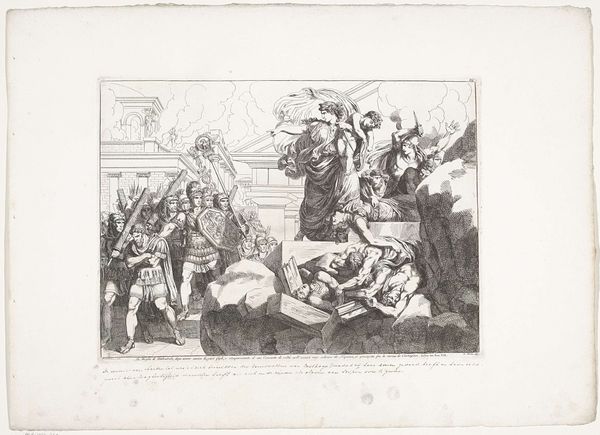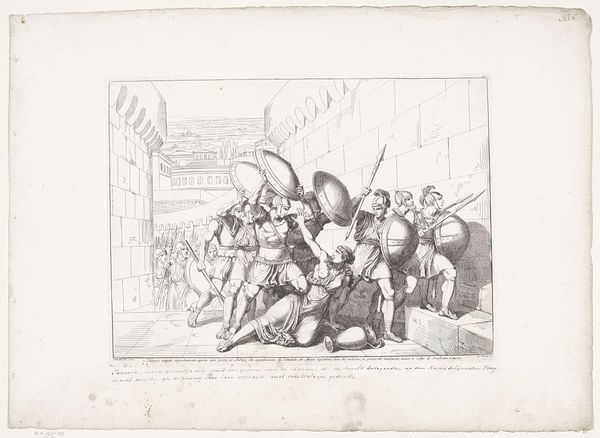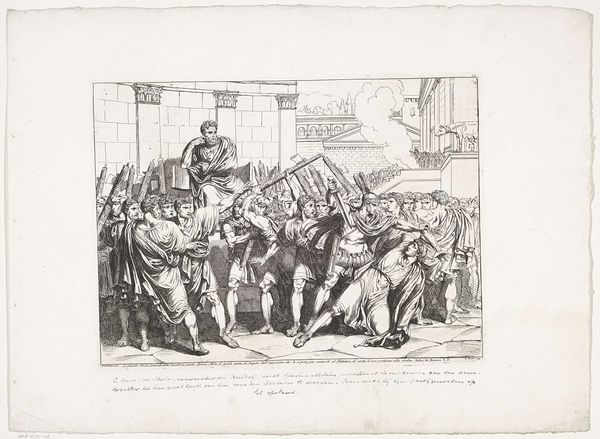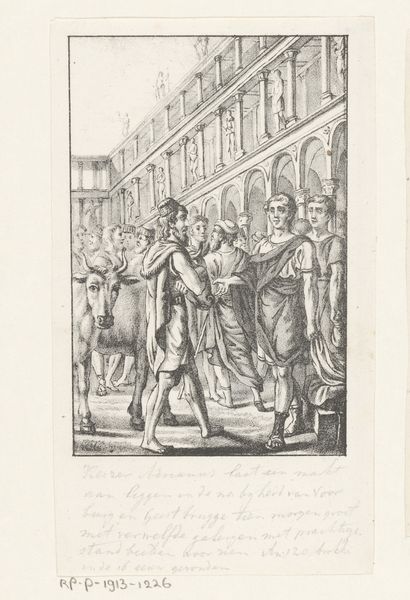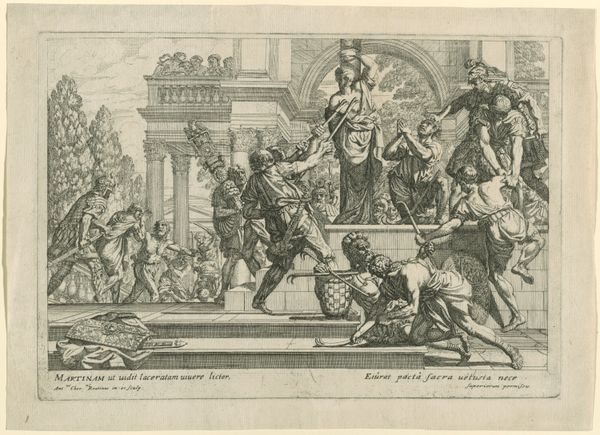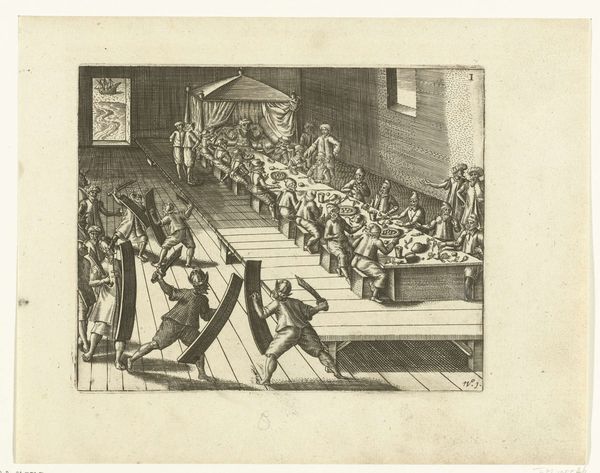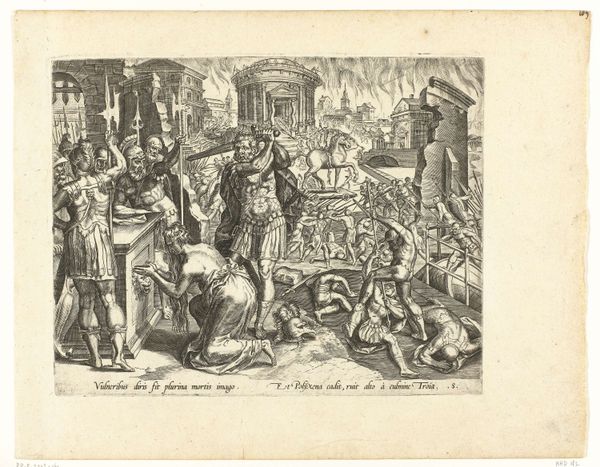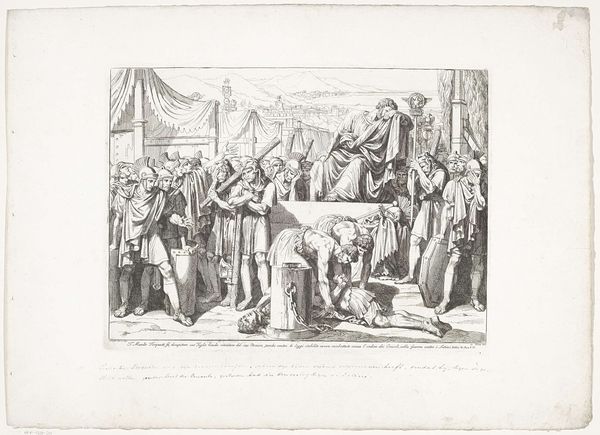
drawing, print, ink, engraving
#
drawing
#
neoclacissism
#
narrative-art
# print
#
pen illustration
#
pen sketch
#
old engraving style
#
classical-realism
#
figuration
#
form
#
ink
#
classicism
#
ancient-mediterranean
#
line
#
history-painting
#
academic-art
#
engraving
Dimensions: height 316 mm, width 426 mm
Copyright: Rijks Museum: Open Domain
Editor: So, this is Bartolomeo Pinelli's "Titus Quinctius Flamininus," created in 1819 using ink. It's quite busy, but the classical architecture in the background really sets a scene of grandeur, almost like a stage. How do you interpret the emotions and the story being told here? Curator: It feels like being thrust into the midst of a celebration, doesn’t it? So much activity swirling around a central figure; you can almost hear the roar of the crowd, the clinking of goblets. To me, Pinelli isn't just depicting a historical moment, he's inviting us to participate in it. Editor: I notice how everyone is facing inwards, all these gazes drawn to a central figure, making him appear elevated. Curator: Exactly! Notice the garlands, the supplicants… Pinelli’s use of line is incredibly powerful here. Each stroke, each carefully placed figure contributes to the overall sense of drama and importance, right? He's weaving together history and a touch of theatrics – do you get a sense of that as well? Editor: Absolutely! It does have this performance aspect, particularly as Titus appears elevated like he is enthroned. Was Pinelli’s aim always to capture these grand, dramatic historical moments? Curator: That's a really insightful question! Pinelli, like many artists of his time, was fascinated by history, and particularly antiquity – his focus on everyday life within it adds such incredible energy! I wonder what the actual story behind it is. What do you think that scene unfolding before you tells of Titus and his story? Editor: I am unsure to be honest, the details of his life are rather faint in my historical understanding, so I am going to look him up after this tour to further inform myself. I am grateful you showed me this piece! Curator: And I you, your perspectives never fail to make me consider another approach!
Comments
No comments
Be the first to comment and join the conversation on the ultimate creative platform.
